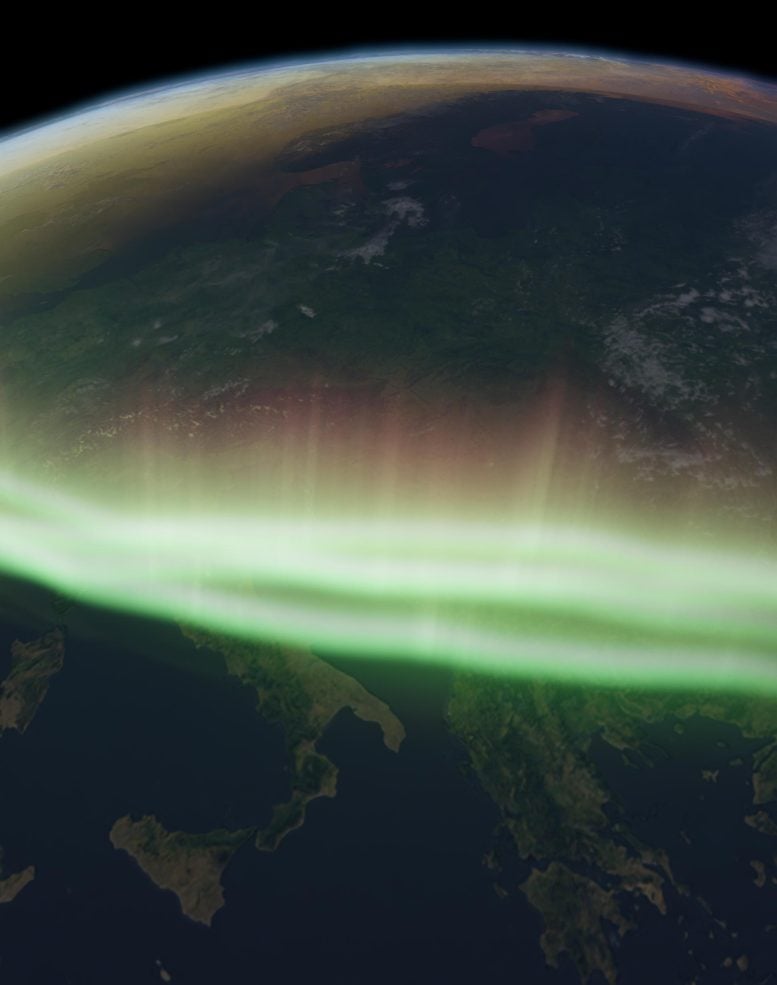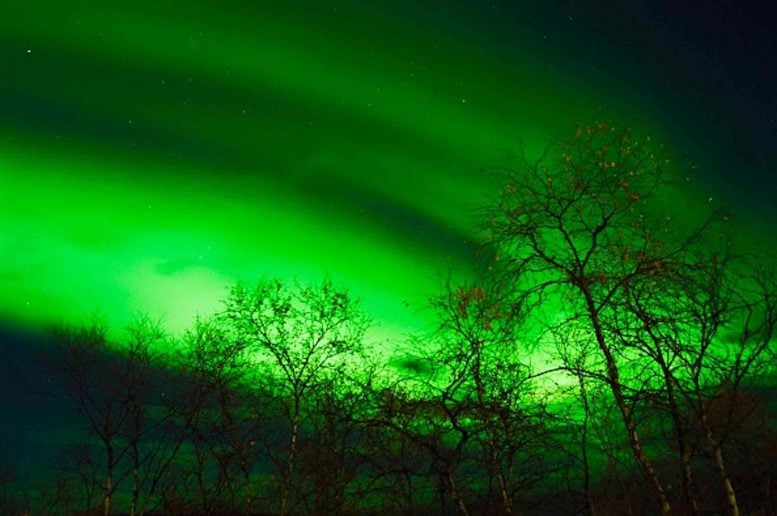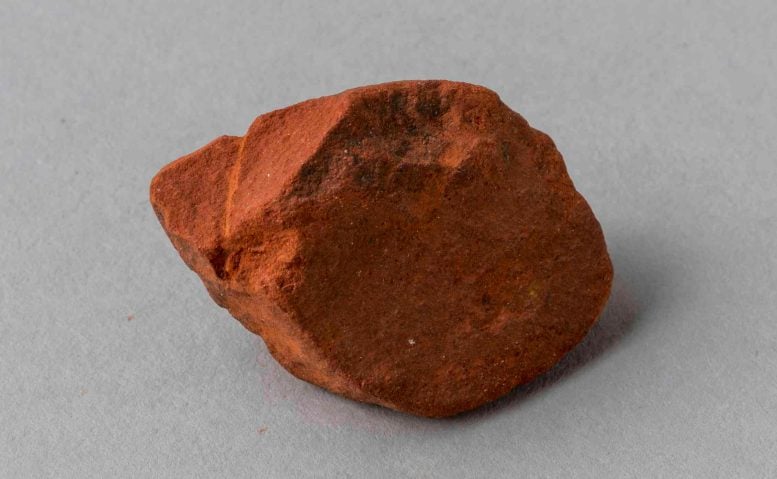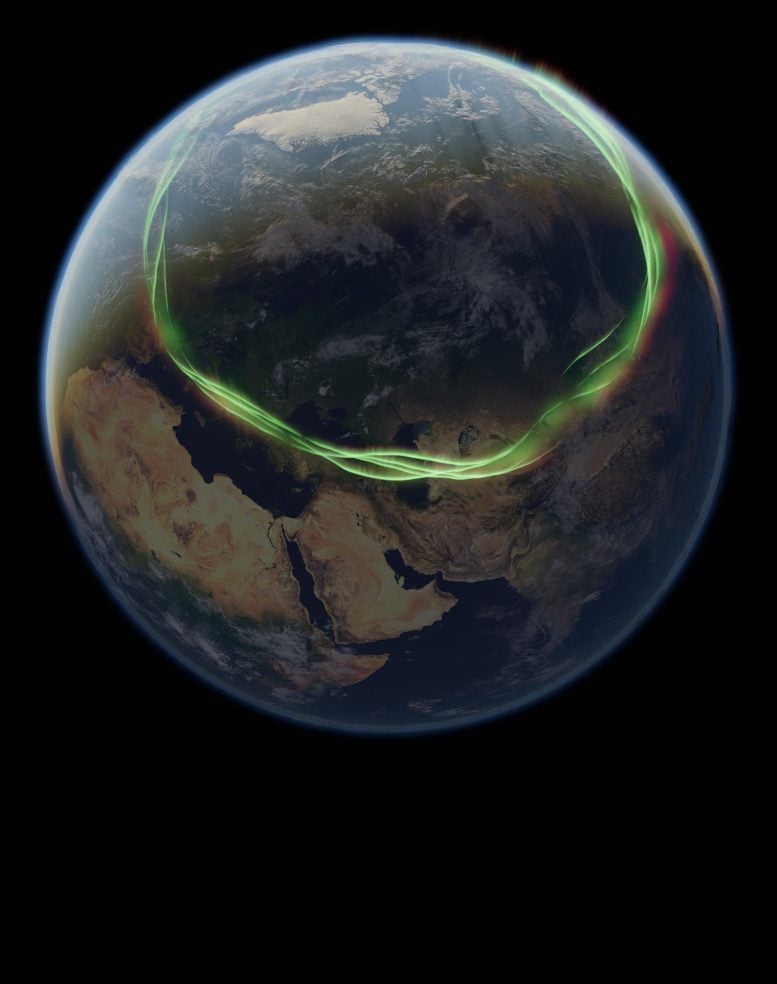
Weak magnetic fields once exposed humans to radiation. People adapted with shelter, clothing, and mineral protection.
Our first meeting was a bit awkward. One of us is an archaeologist who studies how past peoples interacted with their environments. Two of us are geophysicists who investigate interactions between solar activity and Earth’s magnetic field.
When we first got together, we wondered whether our unconventional project, linking space weather and human behavior, could actually bridge such a vast disciplinary divide. Now, two years on, we believe the payoffs – personal, professional and scientific – were well worth the initial discomfort.
Our collaboration, which culminated in a recent paper in the journal Science Advances, began with a single question: What happened to life on Earth when the planet’s magnetic field nearly collapsed roughly 41,000 years ago?
Weirdness when Earth’s magnetic shield falters
The event is known as the Laschamps Excursion, a short but intense geomagnetic disruption named after volcanic deposits in France where it was first discovered. Near the end of the Pleistocene epoch, Earth’s magnetic poles did not undergo a full reversal, as they typically do every few hundred thousand years. Instead, they shifted erratically across thousands of miles, while the strength of the magnetic field fell to less than 10% of its present level.

Under normal conditions, Earth’s magnetic field behaves like a stable dipole, similar to a bar magnet. During the Laschamps Excursion, however, it broke apart into several weaker poles scattered across the globe. This fragmentation weakened the magnetosphere, Earth’s natural shield that normally blocks much of the solar wind and harmful ultraviolet radiation from reaching the surface.
With the magnetosphere compromised, models suggest that a variety of near-Earth effects would have occurred. Auroras, which today are usually confined to the polar regions, likely appeared much closer to the equator, and the planet was exposed to significantly higher levels of solar radiation than we experience now.
The skies some 41,000 years ago may therefore have been both dazzling and dangerous. Recognizing this, we as geophysicists began to wonder how such conditions might have influenced human populations of the time.
From an archaeological perspective, the answer was clear: they were indeed affected.
Human responses to ancient space weather
For people living during this period, the auroras would likely have been the most visible and dramatic consequence, perhaps provoking awe, fear, ritual practices, or other responses that are difficult to trace. The archaeological record rarely preserves direct evidence of such emotional or cognitive reactions.
The physiological consequences of heightened ultraviolet exposure, however, are easier to assess. With the magnetic field weakened, more harmful radiation reached the surface, increasing the risks of sunburn, vision damage, birth defects, and other health concerns.

In response, people may have adopted practical measures: spending more time in caves, producing tailored clothing for better coverage, or applying mineral pigment “sunscreen” made of ochre to their skin. As we describe in our recent paper, the frequency of these behaviors indeed appears to have increased across parts of Europe, where effects of the Laschamps Excursion were pronounced and prolonged.
During this time, both Neanderthals and Homo sapiens inhabited Europe, though their ranges likely overlapped only in certain regions. Archaeological findings indicate that these populations responded differently to environmental pressures, with some relying more heavily on shelter or material culture as forms of protection.
It is important to emphasize that the research does not claim space weather alone drove these changes in behavior, nor that the Laschamps event was responsible for Neanderthal extinction—a common misinterpretation. Instead, it may have been one of several factors, an unseen but influential force shaping human adaptation and innovation.
Cross-discipline collaboration
Collaborating across such a disciplinary gap was, at first, daunting. But it turned out to be deeply rewarding.
Archaeologists are used to reconstructing now-invisible phenomena like climate. We can’t measure past temperatures or precipitation directly, but they’ve left traces for us to interpret if we know where and how to look.
But even archaeologists who’ve spent years studying the effects of climate on past behaviors and technologies may not have considered the effects of the geomagnetic field and space weather. These effects, too, are invisible, powerful and best understood through indirect evidence and modeling. Archaeologists can treat space weather as a vital component of Earth’s environmental history and future forecasting.

Likewise, geophysicists, who typically work with large datasets, models and simulations, may not always engage with some of the stakes of space weather. Archaeology adds a human dimension to the science. It reminds us that the effects of space weather don’t stop at the ionosphere. They can ripple down into the lived experiences of people on the ground, influencing how they adapt, create and survive.
The Laschamps Excursion wasn’t a fluke or a one-off. Similar disruptions of Earth’s magnetic field have happened before and will happen again. Understanding how ancient humans responded can provide insight into how future events might affect our world – and perhaps even help us prepare.
Our unconventional collaboration has shown us how much we can learn, how our perspective changes, when we cross disciplinary boundaries. Space may be vast, but it connects us all. And sometimes, building a bridge between Earth and space starts with the smallest things, such as ochre, or a coat, or even sunscreen.
Reference: “Wandering of the auroral oval 41,000 years ago” by Agnit Mukhopadhyay, Sanja Panovska, Raven Garvey, Michael W. Liemohn, Natalia Ganjushkina, Austin Brenner, Ilya Usoskin, Mikhail Balikhin and Daniel T. Welling, 16 April 2025, Science Advances.
DOI: 10.1126/sciadv.adq7275
Adapted from an article originally published in The Conversation.![]()
Agnit Mukhopadhyay has received funding from NASA Science Mission Directorate and the University of Michigan Rackham Graduate School.
Raven Garvey and Sanja Panovska do not work for, consult, own shares in or receive funding from any company or organization that would benefit from this article, and have disclosed no relevant affiliations beyond their academic appointment.
Never miss a breakthrough: Join the SciTechDaily newsletter.
Source link


